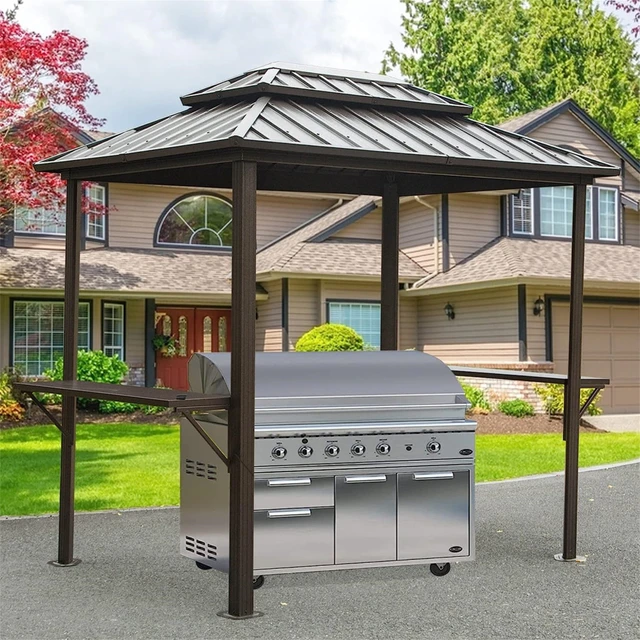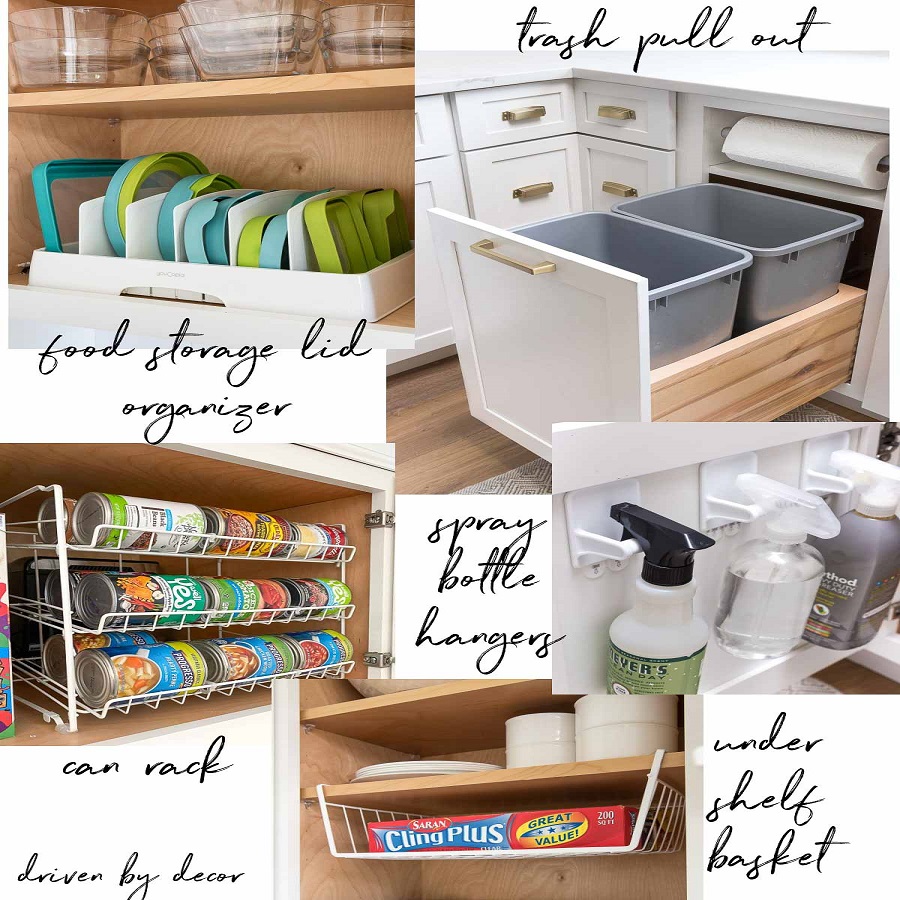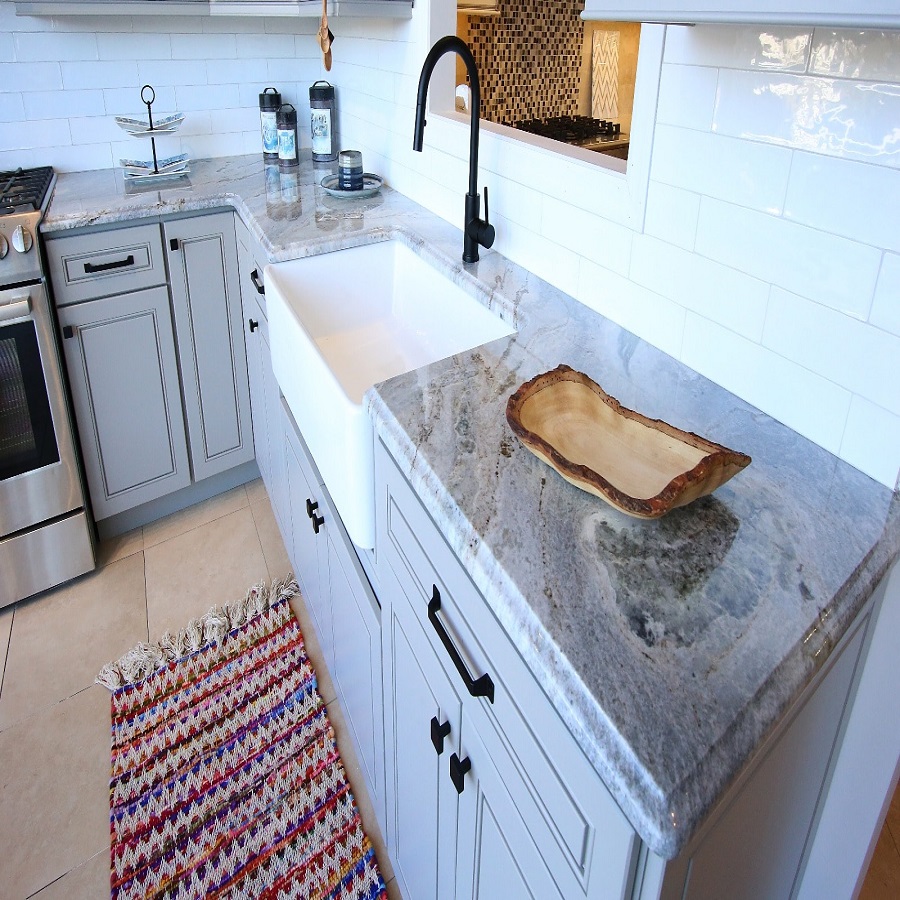 Introduction:
Introduction:
An outdoor kitchen gazebo is the perfect addition to any backyard, providing a sheltered space for cooking, dining, and entertaining. With a variety of designs and features available, an outdoor kitchen gazebo can transform your outdoor space into a functional and inviting culinary haven. In this comprehensive guide, we will explore everything you need to know about outdoor kitchen gazebos. From design considerations and construction materials to layout ideas and maintenance tips, we will cover all aspects of creating your dream outdoor kitchen gazebo. By understanding the features and options available, you can create a space that suits your cooking style and enhances your outdoor living experience.
 Design Considerations
Design Considerations
Size and Layout:
Consider the available space in your backyard and the desired layout for your outdoor kitchen.
Measure the area and plan the layout to ensure proper placement of appliances, seating, and storage.
Integration with Outdoor Space:
Design your outdoor kitchen gazebo to seamlessly integrate with the existing outdoor space and landscape.
Consider factors such as views, natural shade, and proximity to other outdoor living areas.
Climate and Weather Protection:
Choose a design that provides adequate protection from the elements, such as rain, wind, and sun.
Consider options like retractable shades, roofing materials, and built-in fans for added comfort.
 Construction Materials
Construction Materials
Frame and Structure:
The frame and structure of the outdoor kitchen gazebo should be durable and able to withstand outdoor conditions.
Common materials include wood, aluminum, and steel, each with its own advantages in terms of strength and aesthetics.
Roofing Materials:
Select roofing materials that provide protection from the elements and complement the overall design.
Options include polycarbonate panels, metal roofing, or traditional shingles.
Countertop and Finishes:
Choose countertops that are suitable for outdoor use and resistant to heat, moisture, and stains.
Popular options include granite, stainless steel, or specially treated concrete.
Essential Outdoor Kitchen Components
Grill and Cooking Appliances:
The grill is the centerpiece of the outdoor kitchen and should be selected based on your cooking preferences.
Consider additional cooking appliances such as side burners, smokers, or pizza ovens based on your culinary needs.
Sink and Plumbing:
A sink provides a convenient space for food preparation, cleaning, and washing dishes.
Ensure proper plumbing connections for water supply and drainage.
Storage and Cabinetry:
Include ample storage space in your outdoor kitchen gazebo for utensils, cookware, and pantry items.
Choose weather-resistant materials for the cabinetry to withstand outdoor conditions.
Seating and Dining Area:
Create a comfortable seating and dining area within your outdoor kitchen gazebo to accommodate family and guests.
Consider options like built-in benches, dining tables, or a kitchen island with seating.
Lighting and Electrical Considerations
Ambient Lighting:
Install adequate lighting for the outdoor kitchen gazebo to ensure visibility during evening and nighttime use.
Consider options such as string lights, pendant lights, or recessed lighting for a warm and inviting ambiance.
Task Lighting:
Place task lighting strategically to provide focused illumination for cooking and food preparation areas.
Under-cabinet lights, grill lights, and countertop lighting can enhance functionality and safety.
Electrical Outlets:
Ensure the availability of electrical outlets for appliances, such as blenders, food processors, or outdoor speakers.
Consider the placement of outlets to meet your power needs without compromising safety.
 Maintenance and Care
Maintenance and Care
Cleaning an outdoor kitchen gazebo involves several steps:
Clear the area: Remove any furniture, accessories, or items from the gazebo to create a clear space for cleaning.
Remove loose debris:
Use a broom or a brush to sweep away leaves, dirt, and other loose debris from the gazebo’s surfaces and floor. Pay attention to corners, crevices, and hard-to-reach areas.
Rinse with water:
Use a garden hose or a pressure washer to rinse the entire gazebo, including the roof, walls, and floor. This helps remove dirt, dust, and any remaining debris.
Prepare a cleaning solution:
Mix a mild detergent or soap with warm water in a bucket or a sprayer. Avoid using harsh chemicals or abrasive cleaners that can damage the gazebo material.
Scrub the surfaces:
Dip a soft brush, sponge, or cloth into the cleaning solution and scrub the gazebo’s surfaces. Focus on areas with stains, dirt, or grime. Pay attention to any specific material or surface requirements and avoid excessive scrubbing that may cause damage.
Rinse thoroughly:
After scrubbing, rinse the entire gazebo with clean water to remove any soapy residue. Ensure that all cleaning solution is completely rinsed off.
Dry the gazebo:
Allow the gazebo to air dry naturally or use a clean towel or cloth to wipe away excess water. Avoid leaving the gazebo wet, as this can promote mold or mildew growth.
Clean the furniture and accessories:
Clean any furniture or accessories that were removed from the gazebo. Follow the manufacturer’s instructions or specific cleaning recommendations for each item.
Reassemble and organize: Once the gazebo and its components are dry, reassemble and organize the furniture and accessories back into the gazebo.
Regular maintenance and cleaning of the outdoor kitchen gazebo will help keep it looking clean and prolong its lifespan. It’s important to refer to the manufacturer’s instructions or guidelines specific to your gazebo to ensure proper cleaning and care. Additionally, inspect your gazebo regularly for any damage or wear and address any issues promptly to maintain its integrity.
Seasonal Maintenance:
Perform seasonal maintenance tasks such as inspecting the structure, checking for loose screws or bolts, and treating wood surfaces if necessary.
Covering and Protection:
Consider using covers or tarps to protect your outdoor kitchen from extreme weather conditions.
Store removable cushions, accessories, and appliances indoors during extended periods of disuse.
 Conclusion:
Conclusion:
An outdoor kitchen gazebo provides a versatile and enjoyable space for cooking and entertaining in your backyard. By considering design considerations, selecting durable construction materials, and incorporating essential kitchen components, you can create a functional and inviting outdoor kitchen. Pay attention to lighting, electrical needs, and seating arrangements to enhance the overall experience. Regular maintenance and care will help ensure the longevity and aesthetics of your outdoor kitchen gazebo. With the right design and attention to detail, you can create a culinary haven that allows you to fully enjoy outdoor living and dining.



